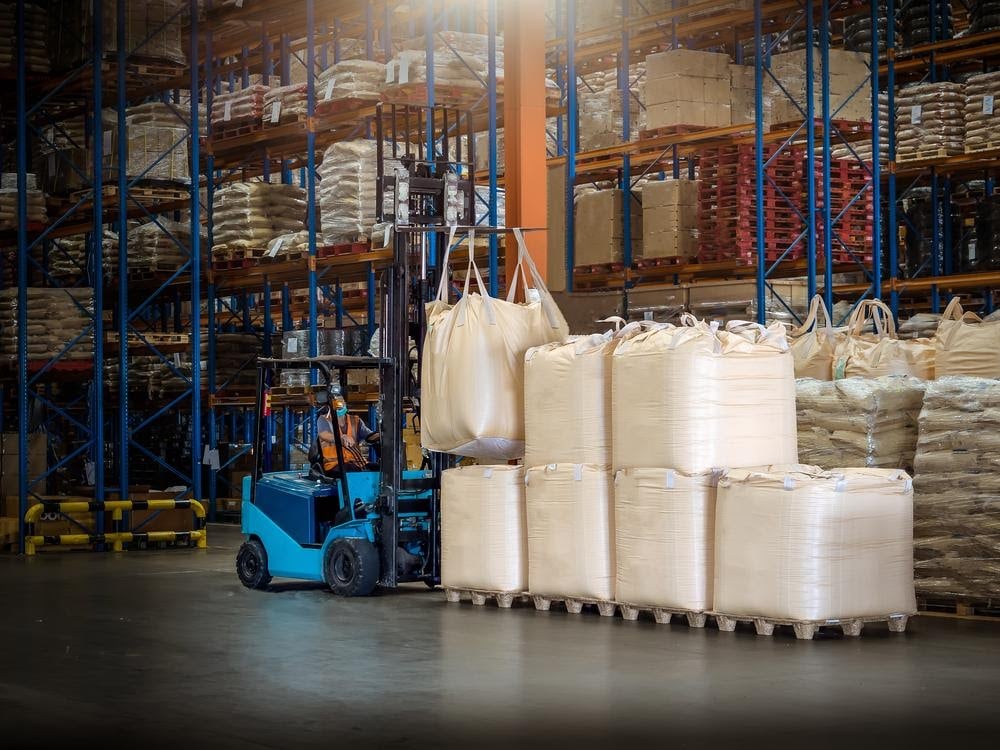
Spills from supersacks happen. To an extent, they are inevitable in the world of supersack unloading equipment. Maybe a fork truck driver is carrying a big bag on a pallet and it brushes up against something in the plant — product starts pouring out of the bag and now, not only is that material wasted, but time and energy are used cleaning up the mess.
Other times, operators may not notice a rip or slice in a bulk bag until it has been lifted on an unloader. Material begins to pour out rapidly and time is once again used to halt the process. It now takes a fair amount of energy to clean the mess and change out the bag.
If a hired staff is recruited for doing nothing else but sweeping the floors in either of these cases, the frequency of spills is going to affect how large this staff is. If spills are less frequent and sanitation expenses are minimized, more of the company’s money could be spent in other ways.
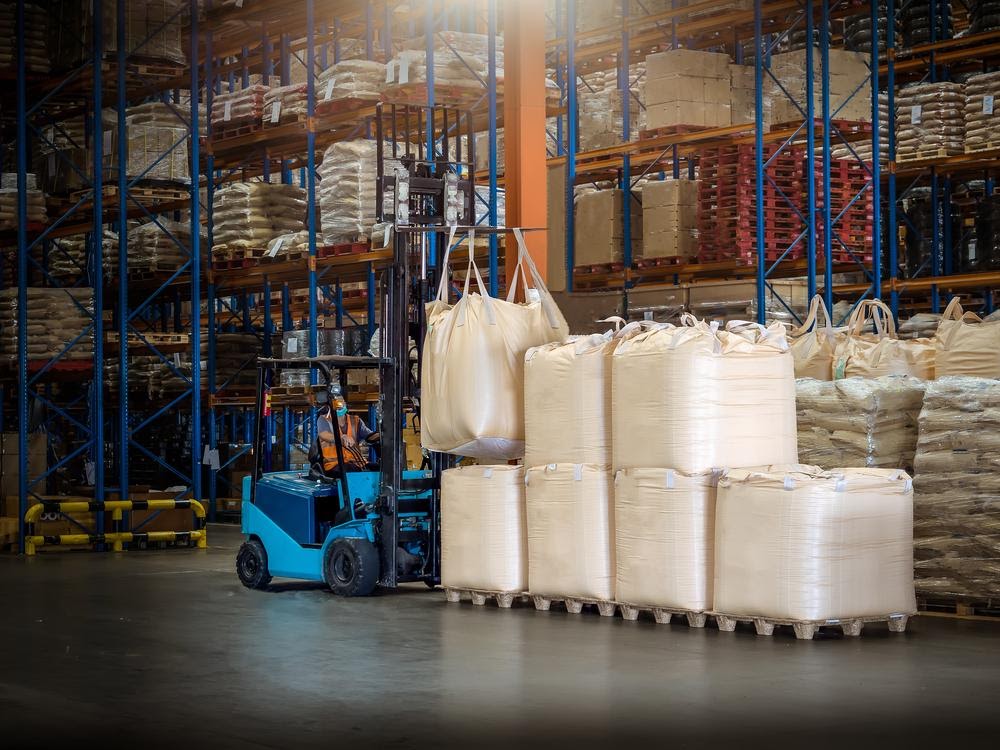
While the simple solution to prevent spillage is for your plant’s workers to be cognizant of how they are handling materials, considerations don’t stop there when it comes to supersack unloading. Big bag unloading systems can’t stop rips or tears that happen before the bag reaches the unloading stage, but these efficient machines are designed to ensure dust and material are not spilled once the unloading process has begun.
While some spills are just inevitable, an AZO big bag unloader will have you covered while the material is being unloaded.
Here’s how the built-in features of a bulk bag unloader (and even the features of certain bags) eliminate product spillage while unloading material.
The vent stub of a big bag connecting system minimizes dust while powders are isolated
Dust control and minimizing product spillage go hand-in-hand. Just look at powdered paint and observe how fine the material is. Essentially, if a material like powdered paint or flour hits the factory floor, everything that bounces back up into the air is classified as dust.
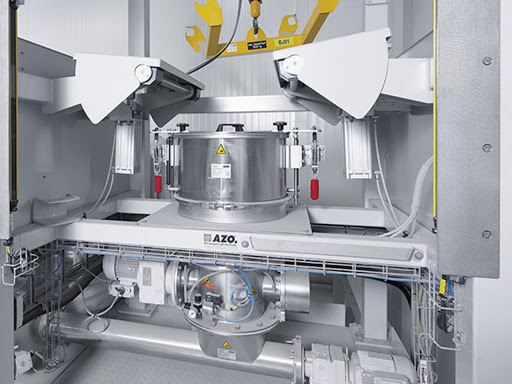
We’ve reviewed the common ways that dust management can be built into a supersack unloading system. In that post, we mentioned how dust control is made possible with a big bag connection system (or Big Bag Adapter), but there’s a specific part of these connecting systems that minimize dust and accomplishes this while avoiding separated powder material.
As an extra precaution, vent stubs (or dust stubs) can be included in the big bag connecting system in order to minimize the dust that might escape your process when changing out bags. These vents help collapse the bag (almost like a balloon that is losing air) before the bag reaches a low enough level to tie the end off.
Of course, there are other methods to remove excess air from a big bag (using a mixer fan or vacuum, etc.), and different projects call for different solutions. Whatever your unloading process requires, a few features of certain bags themselves will help make sure that powder doesn’t spill onto the floor when unloading.
A bulk bags’ design works with a connecting system to reduce spillage
To be fair, most of the dust in a process can be traced from a seemingly empty bag and not from the filling or unloading of the bags. As the nature of unloading a bulk bag doesn’t always clean out every bit of product every time, excess material can get caught in folds in the supersack. Dust then accumulates. While every bulk bag is a little different, most are made out of poly fiber and some have features that work in tandem with an unloader to minimize product spillage.
“Liners” can be placed on the inside of a bulk bag so that material doesn’t directly touch the bag. Occasionally these liners are even sewn in to avoid sliding. This way, dust is kept on the inside between the liner and the bag.
Some bags have shoelace ties sewn into them that can be tied on. Other bags just utilize a wire tie or zip tie to seal the outlet. No matter what the situation, folding and tucking the end of a bulk bag significantly reduces the chances that material or dust will escape the bag.
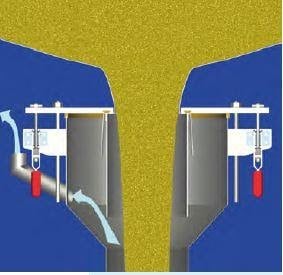
Once a big bag’s outlet is closed and pulled over the inner pipe of an AZO big bag connecting system, it is clamped firmly in place by a manually lowered pressure disc. Any product that does escape the bag during unloading is returned by an annular gap between inner and outer pipes.
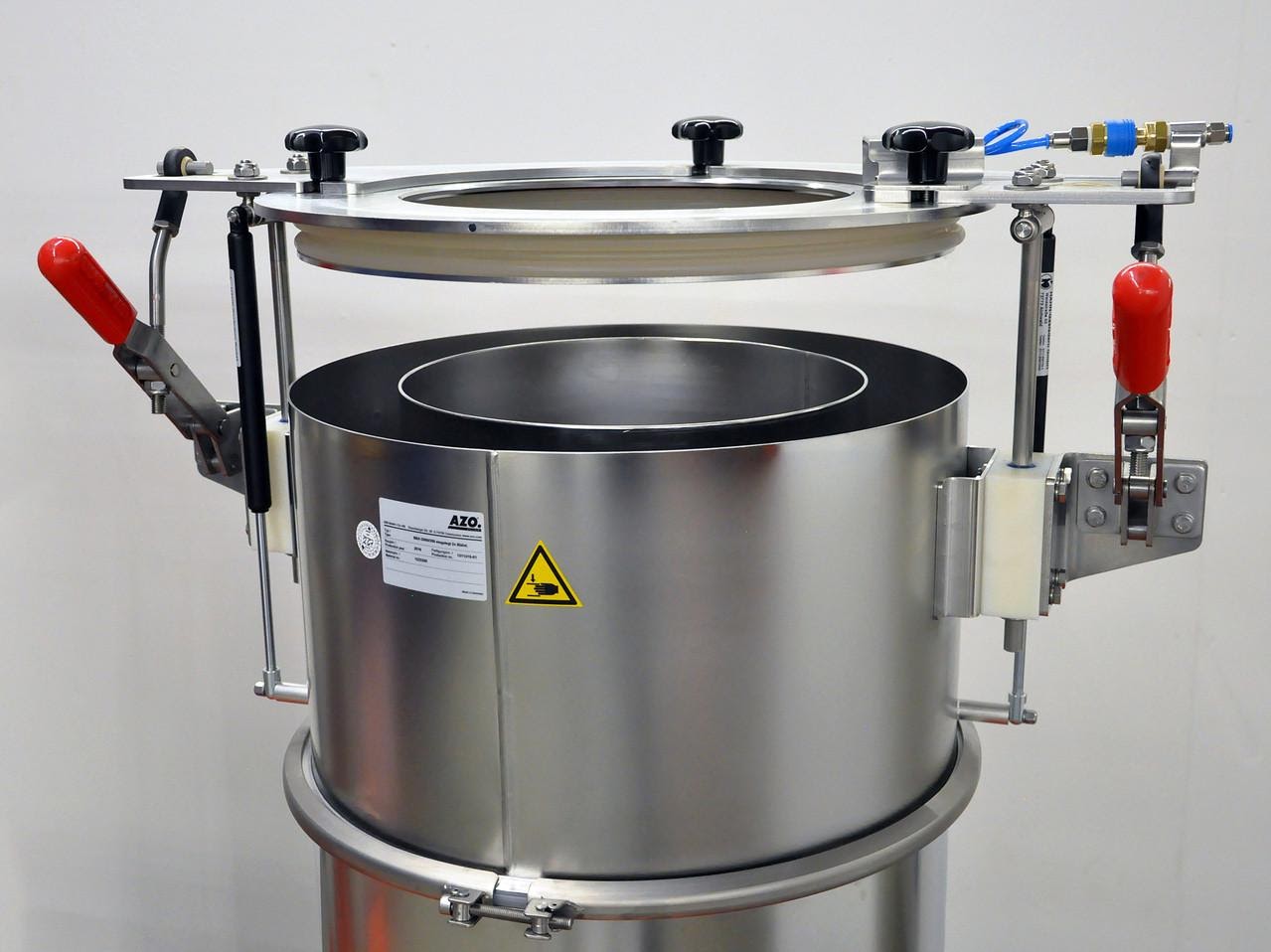
AZO’s double-pipe design on a big bag connecting system
Maintaining plant safety requirements also address dust and spillage concerns
Avoiding various risks during material handling operations will ultimately come down to maintaining a company culture around great maintenance and safety. Preventing ambient dust altogether is a difficult feat, but the risks associated with dust accumulation make these maintenance and safety considerations critical. As workers bring items in, some amount of ambient dust is inevitable. Still, good housekeeping and effective air quality control within the building will reduce these concerns.
It’s also generally helpful to keep sanitation equipment near operations and to ensure that they always meet requirements of sanitation. For instance, just as a home vacuum cleaner will need to be emptied frequently, a Shop-Vac will also need to be regularly emptied.
As operators seldom have any standard routine for checking the hundreds of bulk bags contained in a warehouse, and the occasional bag mishaps are an accepted possibility, it is always critical to take precaution when handling big bags on a big bag unloader. Spills happen, but the proper precautions and effective reactions will minimize the costs of these events to the company both in time and money. A quality unloader will then pick up the slack for the rest of the process to maintain the product where it needs to be.
If you have specific questions about robust and long-lasting bulk bag unloaders built by AZO, don’t hesitate to take a look at our configurator or bulk bag unloader buying guide. You can also contact our sales team for more essential information regarding ingredient automation.


